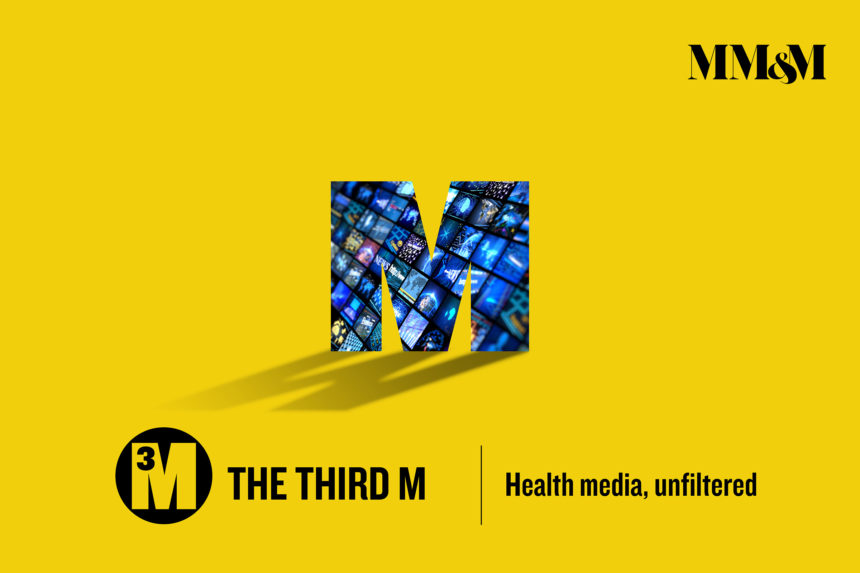For media folk, few annual research projects are as eagerly anticipated as Zenith’s Healthcare Advertising Expenditure Forecasts. Published every August in collaboration with Publicis Health Media, the report is both a gargantuan data download and a crafted piece of analysis. That’s a tricky line to toe.
And that’s the reason why it’s one of the most challenging pieces of research to unpack. To that end, we checked in with Jonathan Barnard, Zenith’s head of forecasting, to get his big- and small-picture take on the report’s revelations. Here are seven key takeaways.
1. Healthcare ad spending lags the overall market, but not by much
In the 13 markets covered by the Zenith study – Australia, Brazil, Canada, China, France, Germany, India, Italy, Russia, South Korea, Spain, the U.K. and the U.S., which collectively account for 78% of all advertising spending – healthcare advertising is expected to reach $36 billion in 2019. That represents 3.6% year-on-year growth; Zenith expects another year of 3.6% growth in 2020 (see graph below).
While advertising spending across all categories is expected to increase 4.8% this year and 4.3% in the next one, Barnard doesn’t see the lag in healthcare spend as either particularly surprising or as reason for concern. “[Healthcare] is being challenged to rethink business models by new technologies, new communication models and new ways of handling data,” he says. “It’s a period of change.”
2. Television ad budgets are under siege
In 2018, a whopping 54.7% of healthcare ad spend went to TV, versus 30.8% of all ad spend (see graph below). But Zenith expects that this will change, and fast: healthcare advertising spending declined by 3.1% in 2018 and is projected to drop 4.6% in 2019 and then 5.2% in both 2020 and 2021.
Barnard views the shift away from television as largely inevitable, given the inefficiency that comes with any mass-advertising medium. But he says the change in and around healthcare has been fueled by different factors than the ones chipping away at TV in other categories.
“It’s quite illustrative that, in the U.S., we’re seeing a requirement to put prices in drug ads. That shows the government wants to use advertising as a tool to reduce drug prices. They want to make advertisers play a role in this by showing consumers directly what they’re paying for,” Barnard says.
That’s a factor which, he believes, will soon prompt healthcare marketers to revamp their media allocations. “If I were a healthcare brand in the U.S. right now, I certainly would be considering moving a lot of my money from TV into other areas,” he continues. “TV will remain dominant for some time, but it’s becoming less attractive.”
3. Digital spend will pick up the slack
We know what you’re thinking: Well, duh, of course it will. The internet snared 34% of healthcare ad spending in 2018 (see graph above). Overall, internet advertising grew 16% in 2018 and is forecast to grow another 16% in 2019. Zenith projects that it will finally overtake TV as the most-used channel for healthcare in 2021, at which time it will seize 46% of all spending from these marketers.
While Barnard isn’t surprised by the general trend, he believes the pace of change might catch some marketers unaware, especially in the United States. “Brands outside the U.S. have a long history of engaging audiences online, simply because they weren’t allowed to use traditional media to the same extent,” he says. “If TV ratings are falling and TV costs are rising, you’ll see brands make that move. They have lots of experience [doing this] outside the U.S.”
4. Online video becomes a major player
Among digital tactics, Barnard is especially bullish on the potential of online video to drive results for healthcare marketers. “It has lots of advantages that TV doesn’t have, in terms of targetability and addressability,” he says. “You don’t get that mass reach, but you can reach consumers with quite defined characteristic – not just ‘adults 18 to 49,’ but people at a particular time with particular hobbies and a particular income.”
Barnard acknowledges that a few healthcare advertisers have already taken advantage of it, but he nonetheless touts online video’s potential for messaging flexibility. “You can choose three or four different ways of discussing your product or service. You can be a bit more personal, a bit more discriminating,” he adds.
5. Out-of-home adds impact
Barnard believes out-of-home advertising will be a secondary beneficiary when healthcare dollars start to cascade away from television. The report suggests that it’s underused by healthcare marketers: it will account for 4% of healthcare spending in 2019 versus 6.4% of spending across all categories (see graph above). And that’s after healthcare OOH spending grew 11% last year and is projected to grow 15% this one.
Barnard points to digital displays, especially in highly trafficked urban areas, as the eventual game-changer. “Until recently, out-of-home was basically static posters, which isn’t a great way of getting across the kind of marketing messages you see on TV,” he explains. “Now you have motion and sound, which allows marketers to play with messaging a bit more.” They can also make on-the-fly adjustments to their campaigns. “If you’re a healthcare brand that has a cold remedy, you can rapidly deploy messaging around it during a cold snap. You can do the same for [skin treatments] during a period of hot weather,” he notes.
6. Newspapers are alive!
Well, in India they are, anyway. Overall, healthcare spending in newspapers was up 6% in 2018, with Zenith projecting that figure to rise to 17% in 2021 (see graph above) . These numbers not only challenge the conventional wisdom, but also fly in the face of forecasts for overall global newspaper ad spending (down 5% annually).
As it turns out, data from a single country skews the overall number. Over the years, newspapers have been the preferred channel for healthcare advertisers in India. In fact, newspapers are thriving there: ad spending, circulation and readership are all up. Alas, once you remove India from the mix, the overall share of healthcare advertising in newspapers falls in line with existing trends: it’s expected to drop from 2018’s level of 2.1% to 1.6% in 2021.
“In India at least, newspapers are seen as the safe home for healthcare marketing. Healthcare brands see newspapers as the place to put across a message that’s seen as trustworthy and authoritative,” Barnard says.
7. It’s all good
Between 2013 and 2018, healthcare advertising spend in the United States grew at an average rate of 6% per year. While TV spend fueled much of that surge, its inevitable decline won’t chip away at overall rates too acutely. Zenith forecasts 6% growth again in 2019, then 5% in both 2020 and 2021. This is hardly anything approaching a doomsday scenario.
“We see the healthcare sector as being in a transition phase. Probably more than most other industries, the core business is under threat from increasing costs and downward pressure on prices,” Barnard says. “It might seem difficult at the moment, but in the medium-term the business is going to be in quite strong shape.”








